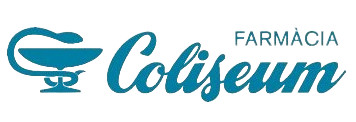In 1994, Madeleine Bastide described experimental models in immunology that were used during the 1980s to investigate high dilution effects on several biological systems.
She classified the available papers in four categories: High dilutions of antigens; High dilutions of thymus, bursa and other hormones; High dilutions of cytokines; Immunopharmacological activity of silica. The studies about high dilutions of antigens were not
continued after this period, but gave rise to a long process of a series of in vifro models on antigens and histamine dilutions, that led to the demonstration of the biological modulation
effects of these preparations on basophil degranulation. During this process, a multi-centre study was performed, with a high degree of reproducibility among different independent laboratories.
The studies about high diluted cytokines, thymulin and other hormones opened a new line of scientific investigation, about the regulatory properties of endogenous substances prepared according to homeopathic methods. The most frequently studied substance, thymulin, when administered to mice at 5cH potency, is able to improve the activity of phagocytes in different experimental situations, such as viral, bacterial and parasitic infections. The immunopharmacological activity of silica was demonstrated, at that time, as an in vivo iIIustration of the homeopathic ‘similia principie’. More recently, studies on silica have assumed another focus: the putative role of silica as active contaminant present in high dilutions. This paper presents a follow-up summary on these items, considering the evolution of discoveries from 1994 to 2014.
Introduclion
In her seminal 1994 review,1 the late lamented Prof. Madeleine Bastide (Figure 1) showed that immunological models are useful for demonstrating the activity of homoeopathic remedies or effects of high dilutions of hormones or mediators. The whole living organism is able to respond to homoeopathic remedies as well as to antigens. Of course, the immunological response is not mechanistically comparable to the action of a homoeopathic remedy, but the immune system is naturally stimulated by extremely low doses of antigens (as low as 0.1 ng [lO- lO g]2;). an in vitro model, human monocytes have been shown present optimal phagocytosis using 10- 14 M postin, such activity was still evident at 10- 18 M.3 of the effects of high dilutions or very low doses in models are still an interesting possi bil ity and open a new field of application using preparations in both the therapeutic and fields.
Methods
The main sources of information for this review were personal contacts with members of the homeopathic research community, mainly during the annual symposium of the Groupe International de Recherche sur l ‘ Infintésimal (GIRI; http://www.giriweb.com; accessed May 21, 2015), and the MEDLINE and HOMBREX databases. Experimental studies that used animal models were extracted from the publications and grouped into models. No clinical or human-based research data were considered in this review.
Results
High dilutions of antigens
The original discussion concentrated on the work of Weisman and colleagues, 1992,4 in which high dilutions (10-15_10-33 M) of KLH protein (keyhole-limpet-hemocyanin) that are prepared in centesimal potencies, including those aboye Avogadro’s number, were able to signal the immune system similarly to the antigen at measurable concentrations and induce the production of polyclonal irnmunoglobulin M (lgM). After a new immunization, a specific potency-dependent increase in monoc10nal anti-KLH immunoglobulin G (IgG; an immune memory antibody) could be seen.
After this period, new articles on immune stimulation with highly diluted substances focused on allergy research.
In 2000, Aabel and colleaguess.6 discussed the curative and prophylactic efficacy of Betula 30C in c1inical trials. No prophylactic effect was found, but a curative effect was observed. The benefits of homeopathy’s curative approach for treating aJlergies were reinforced by other authors a few years later.7- 9
Most studies that utilized this model discussed the modulation of in vitro human basophil degranulation by highly diluted antigens, such as Apis mellifica 10 and histamine. 11
After 20 years of discussion, Sainte-Laudy and Belon published their final conclusion about the effectiveness of 15-l7cH potencies of histaminum as a reproducible biological effect, which was confirmed by a large multicenter study and most independent authors. 12.13 The effect of highly dilutecllsuccussed histamine presented high specificity. The same potencies of related nonspecific substances, such as histidine, had no effect and the histamine action was blocked by the H2 receptor inhibitor cimetidine. The authors also discussed the putative role of histamine H2 receptors in the mechanism of action. 14 The reported difficulties of reproducibility in different laboratories suggest that this model may serve
to identify possible technical factors in the manifestation of the regulating power of high dilutions of histamine.
Descarga el artículo completo aquí
Leoni Villano Bonamin (1) and Paolo Bellavite (2)
1 UNIP, Sao Paulo, Brazil
2 University of Verona, Italy
